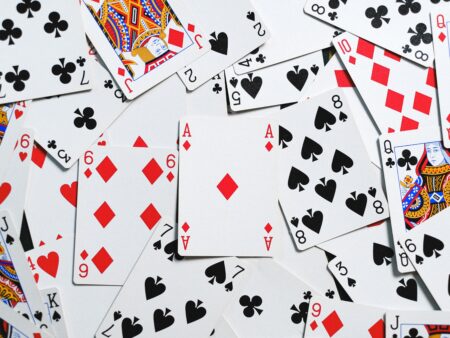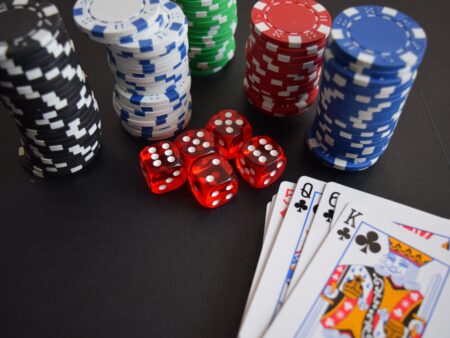Texas Hold’em – rules of the game
Texas Hold’em is currently the most popular variant of poker in the world. Most people treat it as a great entertainment but every year the number of professional poker players rises. The reason behind it is as professional players claim – Texas Hold’em Poker is a game of skills, not luck, and these determine your success in the long run. Below we have presented the basic rules applicable in Texas Hold’em.
Objective of the game
The purpose of the game is to form the strongest five-card hand based on seven cards. Players receive two cards at the beginning of the game, and five more dealt by the dealer during the game.
Start of the game
Blind bets (blinds)
Before dealing, specific players make blind bets, the so-called blinds. Two players to the left of the dealer (the one who deals cards) post a small and big blind. These are the only players who contribute money to the pot before cards are dealt. Values of blind bets are dependent upon the specific table.
Dealer
In Texas Hold’em the croupier starts dealing from the player marked with „D” letter. This mark identifies the player who „deals”. In fact in this variant of poker cards are dealt by our croupier (computer), but it is the player marked with „D” who plays like a dealer. Cards are dealt as if the player deals them live. All players at the table become dealers, one after the other, in a clockwise manner.
Course of the game
The dealer always deals cards, starting from the player on the left hand side. Cards are dealt in a clockwise direction – around the table, to all players in the game. Every player receives one card, and then the second card. These cards face down. The bidding round is always initiated by the persons to the left of the big-blind player. This player cannot check – it can only fold, call or raise the stake of the big blind.
Bidding goes subsequently to every player at the table. Every player may feel free to fold, call or raise the stake, until it is the turn of the person who posted a big blind. If nobody has raised the stake by this time, it can check (making the big blind bet) or raise the stake.
Flop
When the first bidding is finished, the dealer deals three cards facing up, the so-called „community cards”. Combining them with private cards, every player can form its hand. At this point you already know your own cards and the value of three community cards. Now the decision you are going to make is probably the most important in this game.
After receiving the „flop”, the second round of bidding begins. It starts from the player who is the closest to the dealer. He can decide to check or bet. If one of the players chooses to bet, other players are not allowed to check in this round of bidding – they can only fold, call or raise.
Turn
After the end of the second round of bidding, there is another fourth card coming up on the table, it is visible to all participants – turn. Turn is a very important round of bidding in Texas Hold’em. At this stage of bidding, the value of bets grows. Also stake raising is limited to three. Now you can use all six cards to form your best hand. Bidding also starts from the player who remains closest to the dealer and moves in a clockwise manner.
River
After the bidding, the fifth card (river) is turned upside down (facing up). There are now three cards from the flop, the fourth card – turn and fifth card – river. At this point you have five cards on the table and two cards per player. Another round of bidding commences, again starting from the player to the left of the dealer. Players can check, call, raise or fold. At this stage of the game the key is a skillful decision – to keep playing with average hands which can however win or just fold because cards are too weak.
When the bidding is over, players show all cards on the table and the winner is determined on the basis of hierarchy of hands. The winning player does not need to show cards if it has won just because all other players folded.
When the winner is announced, the game starts from scratch. The dealer marker goes to another place, and players on the left hand side post a small and bind blind.
If you wish to learn more about Texas and other variants of poker, order of actions, rules of bidding, etc., see the website designed for playing enthusiasts who want to improve!







